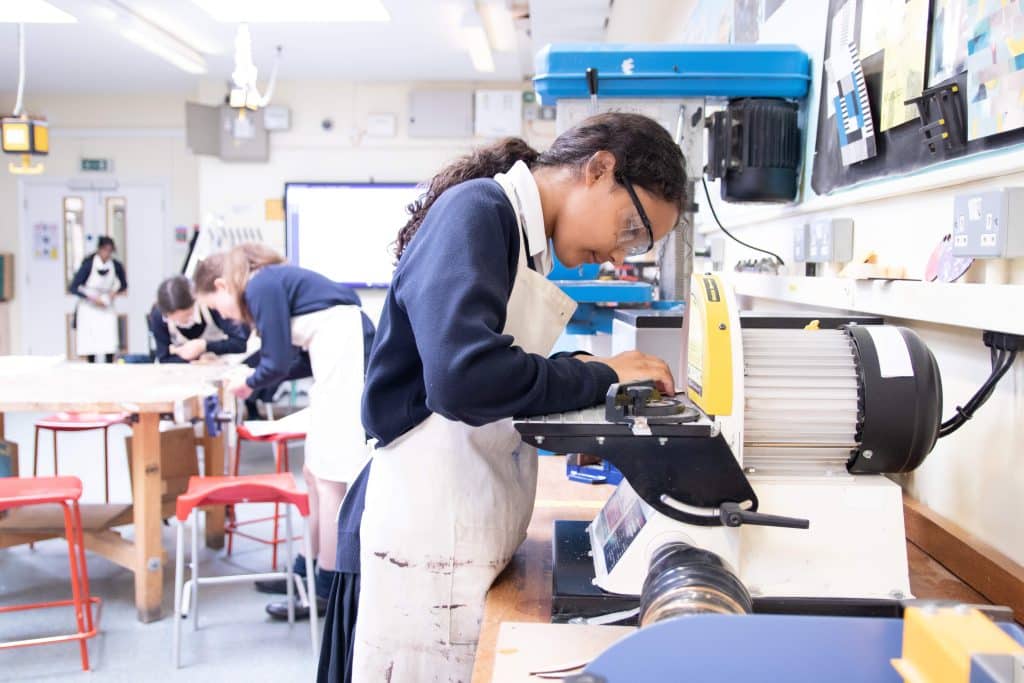Design and Technology at Forest School
Head of Department: Mr H Ibrahim hi@forest.org.uk
In Design and Technology students combine practical and technological skills with creative thinking to design products that meet human needs.
They learn to think creatively and intervene to improve the quality of life, solving problems as individuals or as members of a team.
Stimulating contexts provide a range of opportunities and draw on the local ethos, our community and wider world to identify needs from which they respond with ideas and creative solutions. Students combine practical and intellectual skills with an understanding of aesthetic, technical, cultural and environmental issues to develop a successful solution.
Design and Technology allows students to develop the confidence to use practical skills and apply their creative thinking in a constructively critical and innovative manner.
Our rich learning opportunities can include:
- London Design Museum trip
- International Design trips to places like New York and Florence
- Inspired by Design Lecture series – Sixth Form students Forest Activities program
- Robotics
- Silversmithing
- Upcycling and more
GCSE and A-level Overview
Edexcel GCSE Product Design:
This course enables students to understand and apply iterative design processes through which they explore, create and evaluate a range of outcomes.
The qualification enables students to use creativity and imagination to design and make prototypes (together with evidence of modelling to develop and prove product concept and function) that solve real and relevant problems, considering their own and others’ needs, wants and values.
It gives students opportunities to apply knowledge from other disciplines, including mathematics, science, art and design, computing and the humanities.
AQA A level Product Design:
This creative and thought-provoking qualification gives students the practical skills, theoretical knowledge and confidence to succeed in a number of careers. Especially those in the creative industries.
They will investigate historical, social, cultural, environmental and economic influences on design and technology, whilst enjoying opportunities to put their learning in to practice by producing prototypes of their choice.
Students will gain a real understanding of what it means to be a designer, alongside the knowledge and skills sought by higher education and employers.
Assessment at GCSE and A-level
GCSE:
- 2 Written exams: Unit 1 Core materials and Unit 2 Timbers, 90 minutes, 50% of GCSE
- NEA: Coursework based on a theme released by the exam board, 50% of GCSE.
A level:
- Paper 1: Technical principles, 150 minutes, 30% of A level
- Paper 2: Designing and Making principles, 90 minutes, 20% of A level
- NEA: Coursework based on problem of your choice, 50% of A level
Curriculum Maps – All Years
The-Academic-Curriculum-Prospectus-2024
Forest Curriculum Map – Year 7 – DT
Forest Curriculum Map – Year 8 – DT
Forest Curriculum Map – Year 9 – DT
Forest Curriculum Map – Year 10 – DT
Forest Curriculum Map – Year 10 – 3D Design
Forest Curriculum Map – Year 11 – DT
Forest Curriculum Map – Year 11 – 3D Design
How can Design and Technology change the world?
Design is all around us. We need good designers to solve some of the huge issues we have created to do with things like our environment and natural resources. Clever design and problem solving are key parts to any solutions we might develop in the future.


